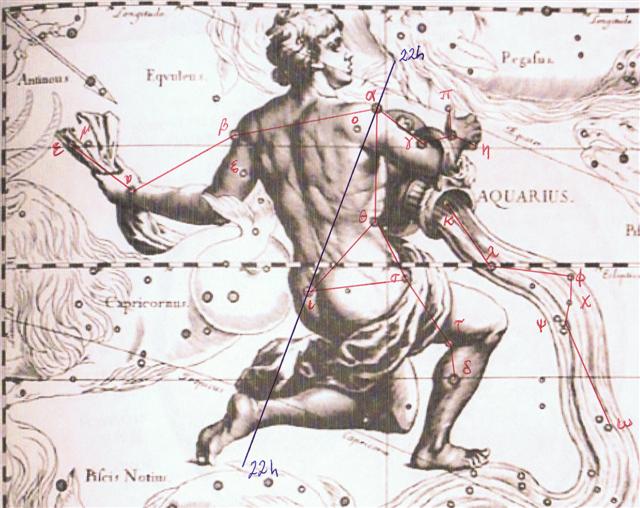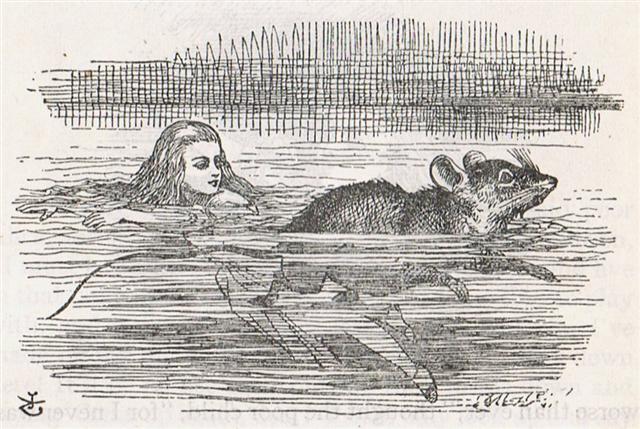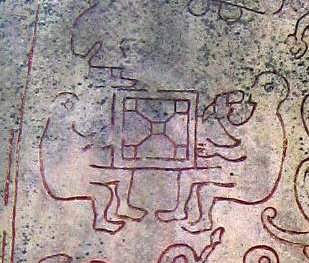Bb12-5 ... There is no need to go into detail regarding the further creeds and customs [in addition to the belief in Kane / Tane] in which various Maori-Polynesian tribes follow the pattern of their Northwest Coast neighbors, such as nose rubbing as a salute, topknots as masculine coiffure, feathers of big birds as hair decoration, head flattening, body tattooing, finger severance, fire walking, armor for combat, the tongue as a symbol of defiance, and weapons carved as stylized heads with an outstretched tongue as the blade, the ignorance of stringed musical instruments which had their main world center between India and Indonesia, and a Maori repetition of the Northwest Coast rattles, percussion instruments, and the wooden flute or flageolet carved as a grotesque human face with sound issuing from its wideopen mouth, the system of taboo, the dread of burial in the ground and preference in both areas of placing the dead on wooden platforms raised on poles, the dried-up remains or skeletons wrapped in bark blankets and deposited in a sitting position with knees below chin in caves, trees, or (also in both areas) in part of a canoe ... From the beginning of the B text on its side a to the end of the text on its side b there are 421 + 506 = 927 glyphs. This is 12 more than 5 * 183; and to begin with
we can notice that 421 + 506 = 927 glyphs in total might be a number alluded to in Ba9-27. Because 927 - 367 (Ba9-27) = 560 → 40 fortnights → 80 weeks → 7 * 80 → *78 (Rigel) → synodic cycle of the planet Mars. Furthermore, 366 + 12 (= 927 - 5 * 183) = 378 → synodic cycle of Saturn. And, of course, 560 → *56 → Alcyone, the first star after the Leader, prince Hamal. ... Strassmeier and Epping, in their Astronomishes aus Babylon, say that there its stars formed the third of the twenty-eight ecliptic constellations, - Arku-sha-rishu-ku, literally the Back of the Head of Ku, - which had been established along that great circle milleniums before our era; and Lenormant quotes, as an individual title from cuneiform inscriptions, Dil-kar, the Proclaimer of Dawn, that Jensen reads As-kar, and others Dil-gan, the Messenger of Light. George Smith inferred from the tablets that it might be the Star of the Flocks; while other Euphratean names have been Lu-lim, or Lu-nit, the Ram's Eye; and Si-mal or Si-mul, the Horn star, which came down even to late astrology as the Ram's Horn. It also was Anuv, and had its constellation's titles I-ku and I-ku-u, - by abbreviation Ku, - the Prince, or the Leading One, the Ram that led the heavenly flock, some of íts titles at a different date being applied to Capella of Auriga. Brown associates it with Aloros, the first of the ten mythical kings of Akkad anterior to the Deluge, the duration of whose reigns proportionately coincided with the distances apart of the ten chief ecliptic stars beginning with Hamal, and he deduces from this kingly title the Assyrian Ailuv, and hence the Hebrew Ayil; the other stars corresponding to the other mythical kings being Alcyone, Aldebaran, Pollux, Regulus, Spica, Antares, Algenib, Deneb Algedi, and Scheat ... (→ E:1) Counting from Ba9-27 to the end of side a we will find 421 - 367 = 54 glyphs (right ascension days). And to the Sun reaching the Good Fortune of the Swallower (Albali, ε Aquarii) - and the culmination of Betelgeuze (at 21h) - there were evidently 56 days (→ *56 → Alcyone, the Queen of Sailing): ... another Alcyone, daughter of Pleione, 'Queen of Sailing', by the oak-hero Atlas, was the mystical leader of the seven Pleiads. The heliacal rising of the Pleiads in May marked the beginning of the navigational year; their setting marked its end when (as Pliny notices in a passage about the halcyon) a remarkably cold North wind blows ...
At *314 (→ 314 → π) the Sun could be imagined to be swallowed by a dry cloth ... He was moreover confronted with identifications which no European, that is, no average rational European, could admit. He felt himself humiliated, though not disagreeably so, at finding that his informant regarded fire and water as complementary, and not as opposites. The rays of light and heat draw the water up, and also cause it to descend again in the form of rain. That is all to the good. The movement created by this coming and going is a good thing. By means of the rays the Nummo draws out, and gives back the life-force. This movement indeed makes life. The old man realized that he was now at a critical point. If the Nazarene did not understand this business of coming and going, he would not understand anything else. He wanted to say that what made life was not so much force as the movement of forces. He reverted to the idea of a universal shuttle service. 'The rays drink up the little waters of the earth, the shallow pools, making them rise, and then descend again in rain.' Then, leaving aside the question of water, he summed up his argument: 'To draw up and then return what one had drawn - that is the life of the world' ... in order to follow the right ascension line leading down to the South Pole star, Dramasa (*320):
This seems to be one of several possible explanations for why the last glyph in the B text is positioned 12 days later than 5 * 183.
|
||||||||||||||||||||||||||||||||||||||||||||||||||||||||||||||||||||||||||||||||||||||||||||||||||||||||||||||||||||||||||||||||||||||||||||||||||||||||||||||||||||

















